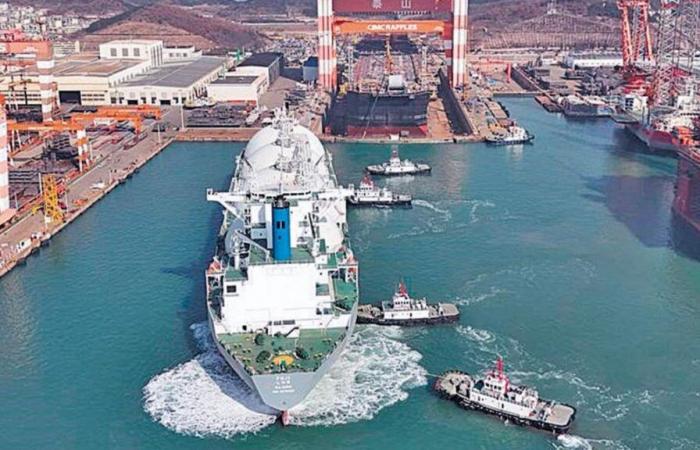Southern Energy and Golar LNG signed an agreement for twenty years for the installation of a second liquefaction ship in the San Matías Gulf, province of Río Negro, which will produce liquefied natural gas for export markets.
Together, the two ships will have a production capacity of six million tons per year of LNG, equivalent to 27 million cubic meters natural gas.
It is expected that the two floating terminals of liquefaction can operate throughout the year, for which the construction of a dedicated gas pipeline to the Gulf San Matías will be required.
In this way, the first phase of the “Argentina LNG” is fulfilled, a project that plans to have the participation of the entire industry, and whose objective is to turn Argentina into an exporting country through different stages during the next few years. LNG sales will only begin in 2027. After the agreement, Southern Energy will have the following shareholding composition: PAE 30%, YPF 25%, Pampa Energía 20%, Harbor Energy 15%and Golar LNG 10%.
The news was held by the Minister of Economy, Luis “Toto” Caputo, who expressed in his social networks in this regard: “With the agreement between Glacear and the Gas Producers of Vaca Muerta Pae, YPF, Pampa and Harbor, the transforming export gas project begins. With this Argentine investment it can be liquefying 26 million cubic meters per day of natural gas from 2027”. “With the two ships in Argentine production, it will be exporting US $ 2.5 billion per year for the next twenty years. This will imply the construction of a new dedicated gas pipeline to supply two liquefaction ships on the Costa Rionegrina. The first stage of the investment already has the approval of the rigi,” he added.
Likewise, Southern Energy reports that he advanced with the final investment decision related to the installation of the “Episeyo Hilli”, which confirms an investment close to US $ 7 billion throughout the twenty years of operation throughout the value chain and that they will also allow to make more additional investments of development in Vaca Muerta. The project submitted its adhesion application to the incentive regime for large investments (Rigi).
The news is known a few days after it is defined that the gnl megaplanta in Río Negro will not be built. The initial plan, which included the Giant Petronas, was modified by the president, Javier Milei, after refusing the project to be located in Bahía Blanca for his opposition to the governor of the province of Buenos Aires, Axel Kicillof. The tuning and operation of the terminal on land would have generated hundreds of direct and indirect Argentine jobs between construction and maintenance.






